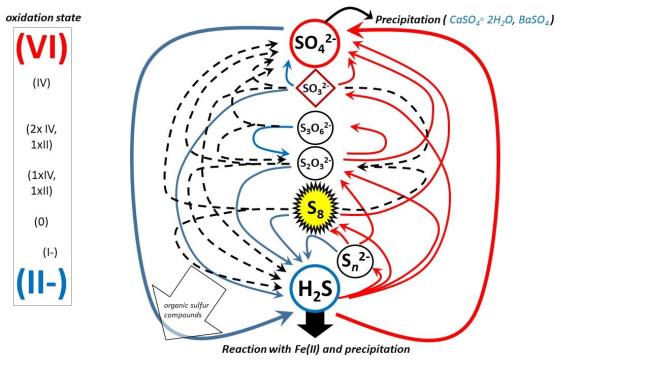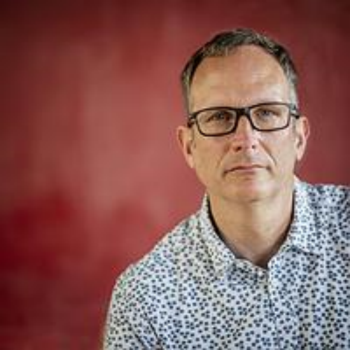
Abstract:
Hydrogen sulfide (nH2S) and sulfur oxide (SOn; n=1,2,3) gases in early Earth’s globally anoxic atmosphere were subjected to gas-phase chemical transformations by UV light. A principal photolysis pathway at that time produced elemental sulfur aerosols with mass-independently fractionated (MIF) isotopic values carrying variable minor isotope (33S, 36S) compositions. These rained into the sulfate-deficient Archean (ca. 3.85-2.5 Ga) oceans to react with [Fe2+]aq and form sedimentary sulfides. The MIF-bearing sulfides were incorporated into Archean sediments, including banded iron-formations (BIF). Such aerosols may also have fueled microbial sulfur metabolisms, and thus are traceable by the MIF sulfur isotopes. Yet, data show that before ~3.5 Ga mass-dependent 34S/32S values in Early Archean sediments tend to fall within a narrow (±0.1%) range even as they carry mass-independent values. By about 3.5 Ga, 34S/32S values show much greater changes (>1%) in range congruent with microbial metabolic processing. It is then traced probable pathways of elemental sulfur aerosols into early to mid Eoarchean sediments and up to the Paleoarchean boundary (ca. 3.55 Ga). Research propose that evolutionary relationships of enzymes involved in sulfur metabolism can explain the observed trends. The model explains why elemental sulfur aerosols were apparently not utilized by the Eoarchean (pre-3.65 Ga) biosphere even though an immediate precursor to the required enzyme may have already been present.
Speaker: Dr. Stephen J. Mojzsis, University of Vienna.

Speaker bio:
Stephen Mojzsis is emeritus Professor of Geological Sciences at the University of Colorado Boulder and past Chair of the Arts and Sciences Council; he taught at CU-Boulder from 2000-2021. His research focuses on how rocky planets geodynamically evolve over geologic time to account for their present physical and chemical states. Mojzsis received his Ph.D in Earth Sciences in 1997 from the Scripps Institution of Oceanography under the mentorship of Gustaf O. Arrhenius and thence to UCLA to take up a postdoctoral position in geochemistry and geochronology with T. Mark Harrison. He holds academic appointments at the University of Vienna (Austria), the University of Jena (Germany) and at the Research Centre for Astronomy and Earth Sciences (Budapest). Mojzsis is actively engaged in many collaborative research ventures worldwide.
Host: Shawn McGlynn, ELSI.
Date: Fri, 4 June, 16:30-17:30 JST (Fri, 4 June, 07:30-08:30 UTC)
Venue: Online
